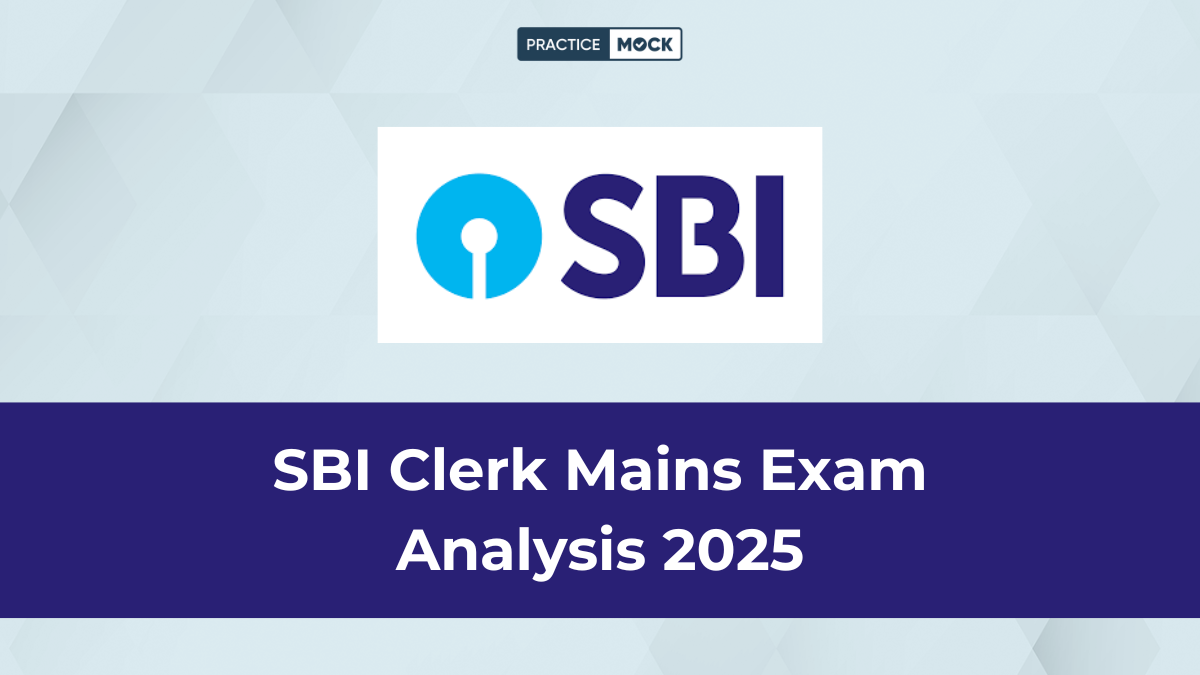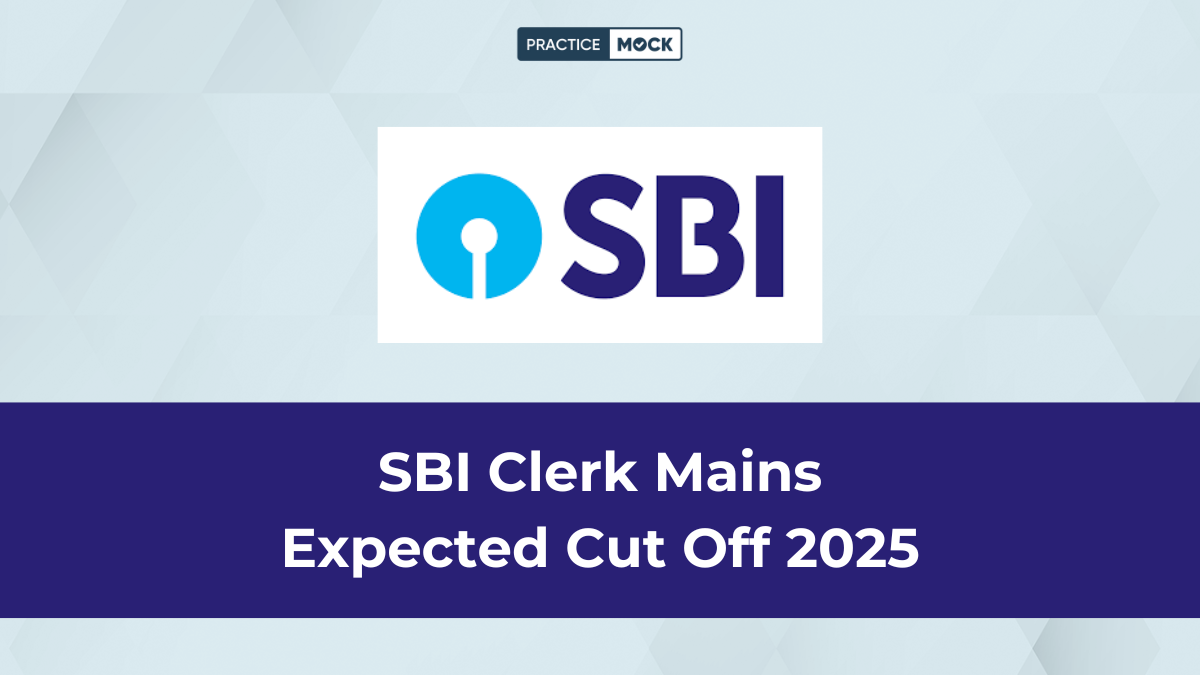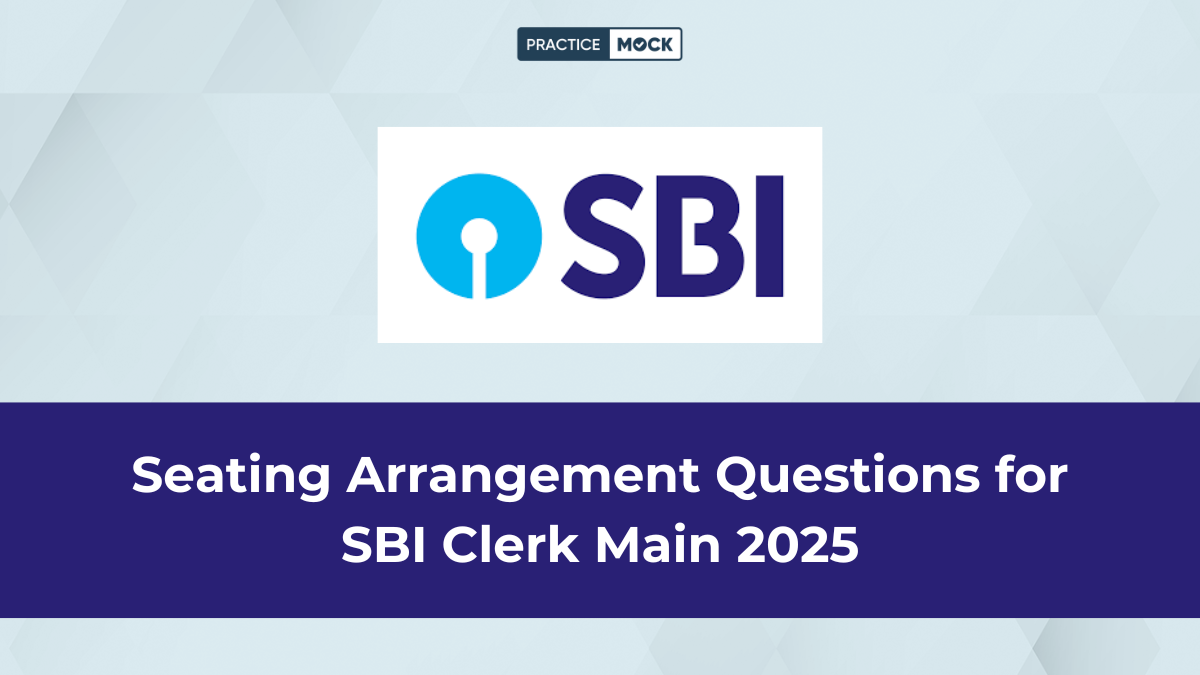Mensuration Expected Questions For SBI Clerk 2024 Prelims Exam


Mensuration Expected Questions For SBI Clerk 2024 Prelims Exam
Mensuration For SBI Clerk: The Mensuration is an important topic for the SBI Clerk 2024 Prelims exam. The Mensuration topics contain 3-4 questions in the SBI Clerk 2024 prelims exam. The SBI Clerk selection process consists of two phases Prelims and Mains. Generally, this section covers basic to moderate-level questions. candidates can understand the Mensuration formulas and their various geometric shapes. In this article, we will discuss the types of questions that can be expected, important concepts and useful tips to prepare for measurement questions in SBI Clerk 2024 Prelims.
What is Mensuration
Mensuration deals with the measurement of areas and volumes of different figures. These figures include both ‘2D’ (two-dimensional) and ‘3D’ (three-dimensional) figures (also known as solids).
Note: By definition, ‘2D’ figures exist in a two-dimensional world and hence have no volume.
Let’s take a brief look at the formulae for areas of various ‘2D’ figures, and areas and volumes of ‘3D’ figures.
2D Figures:
Polygons: A Polygon is a closed figure made up of at least 3 line segments in a two-dimensional plane.
Triangle: A triangle is a polygon containing 3 sides. The area of a triangle is represented by the figure Δ.
Formulas associated with triangles:
Area:
I. For any triangle in general;
For a triangle having sides of length ‘a’ cm, ‘b’ cm and ‘c’ cm;
The perimeter of triangle = Sum of the length of three sides = (a + b + c) cm.
Area = √{s × (s – a) × (s – b) × (s – c)}
Where ‘s’ is the semi-perimeter of the triangle. ‘s’ = {(a + b + c)/2}
This formula is universally known as heron’s formula.
II. For a triangle whose length of base and length of altitude (Height) to that base is given;
Area = (1/2) × base × height
III. Equilateral triangle: If all three sides of a triangle are equal, then it is an equilateral triangle.
For an equilateral triangle with side ‘a’ cm, Area = (√3/4) × a2
Using (II), we have; (1/2) × a × height = (√3/4) × a2
Or, height = (√3/2) × a
IV. Isosceles triangle: If any two sides of a triangle are equal, then it is an isosceles triangle.
Area = (a/4)√(4c2 – a2) {where ‘c’ is the length of each of the two equal sides and ‘a’ is the length of the third (un-equal) side}
Quadrilaterals: Any polygon having for sides is called a quadrilateral.
I. Area of a normal quadrilateral with vertices ‘A’, ‘B’, ‘C’ and ‘D’ (As shown in the figure)
Area of quadrilateral ABCD = (1/2) × Length of BD × (AF + DE), where AF and DE are perpendicular to BC.
II. Trapezium: A trapezium is a quadrilateral having exactly two parallel sides.
Area of trapezium = (1/2) × sum of parallel sides × Height of the trapezium.
III. Parallelogram: A parallelogram is a quadrilateral whose opposite sides are parallel as well as equal to each other.
Area = length of base × height (perpendicular distance)
IV. Square: A square is a parallelogram whose all four sides are of equal length and angles are of 90o each.
Area = (a)2 {where ‘a’ is the length of each side}
V. Rhombus: A Rhombus is a parallelogram whose all four sides are equal.
Area = (1/2) × product of length of diagonals
VI. Rectangle: A rectangle is a parallelogram that has all four angles of 90o
For a rectangle with length ‘L’ cm and Breadth ‘B’ cm,
Area = L × B
And, Perimeter = 2(L + B)
Circle:
For a circle with radius ‘r’ units
Area = πr2
Circumference = 2πr
Area of sector = (θo/360o) × πr2 {Where θ is the angle subtended inside the sector}
Length of arc = (θo/360o) × 2πr
Area and Volumes of solids:
Cube: A cube is a solid shape with six square faces.
Total surface area of cube = 6a2 {Where ‘a’ is the length of edge of the cube}
Volume of cube = a3
Cuboid: A cuboid is bound by 6 rectangular faces. The opposite faces of a cuboid are equal rectangles lying in parallel planes.
Volume of a cuboid with length ‘x’ cm, breadth ‘y’ cm and height ‘h’ cm = (x × y × h)
Total surface area of cuboid = 2(xy + yh + xh)
Lateral surface area of a cuboid = 2xh + 2yh = 2h(x + y)
Cone: A cone is a solid which has a circle at its base and a slanting lateral surface that converges at the apex.
Curved surface area of the cone = π × r × s {Where ‘r’ is radius and ‘s’ is slant height}
Slant height of a cone = √(r2 + h2), where ‘h’ is height of the cone.
Total surface area of cone = Curved surface area + area of base = πrs + πr2 = πr(r + s)
Frustum of a cone: If a cone is cut into two parts by a plane parallel to the base, the portion with the upper tip of the cone still remains a cone; however the portion that contains the base is called the frustum of the cone.
Curved surface area of frustum = π × s(R + r) {Where ‘s’ is slant height ,‘R’ is radius of the base and ‘r’ is the radius of the top.}
Total surface area of the frustum = π(R2 + r2 + Rs + rs)
Volume of the frustum = (1/2) × π × h × {R2 + r2 + Rr} {Where ‘h’ is the height of the cone}
s2 = (R2 – r2) + h2
Cylinder: Cylinder is a three-dimensional solid that holds two parallel bases joined by a curved surface, at a fixed distance.
Curved surface area of a cylinder = 2πrh {Where ‘r’ is the radius of the base and ‘h’ is the height of the cylinder}
Total surface area of the cylinder = 2πrh + 2πr2 = 2πr(r + h)
Volume of cylinder = πr2h
Sphere: A sphere is a three dimensional solid, that has all its surface points at equal distances from the centre. The distance between the centre and a surface point of the sphere is called its radius (r).
Volume of sphere = (4/3) × πr3
Surface area of a sphere = 4πr2
Hemisphere: Where a sphere is divided into two equal and identical parts, the new formed parts are called hemispheres.
Volume of hemisphere = (2/3)πr3
The total surface area of hemisphere = 3πr2
The curved surface area of hemisphere = 2πr2
Mensuration Most Expected Questions PDF Link
We are providing a link to download the most expected mensuration questions PDF. This PDF contains expected questions in both Hindi and English, along with detailed solutions. Candidates can sign up using the link below to download the Mensuration most expected questions PDF.
Preparation Tips For Mensuration SBI Clerk 2024 Exam
Here we are providing some tips and tricks for Mensuration for the SBI Clerk 2024 Prelims exam. candidates can follow these tips and boost your preparation for the Mensuration SBI Clerk 2024 Exam.
Understand Mensuration Topics
Take time to understand the basic properties of various geometric shapes. Often, knowledge of the properties itself will help you quickly deduce answers without necessarily going through heavy calculation
Previous Years’ Papers and Mock Tests
Use SBI Clerk previous years’ papers to see the type of mensuration-type questions that have been asked and know your time management and areas where you need improvement.
Periodic Revision
Mensuration is formula-intensive. Regular revision will help you remember formulas much more
Analyze Mistakes and Improve:
Analyze mistakes made in mensuration problems while you take practice tests, focusing on why you made those mistakes. You may never make the same mistake again on your actual test day.
Related Blog’s on SBI Clerk 2024 Exam
Mensuration Expected Questions For SBI Clerk 2024 Exam FAQ
candidates can download the Mensuration most expected questions pdf in the article below.
Yes, the PDF is available for free and can be accessed in the article below.
Yes, The PDF provides the detailed solution for Mensuration expected question.
Recent Posts
IBPS PO Study Plan 2025 for 1 Month
The Institute of Banking Personnel Selection (IBPS) has released the IBPS PO 2025 notifications for…
100 + DI Repeated Questions for RRB PO 2025, Check How to Solve It Easily?
In this article we are providing the 100 + DI Repeated Questions for RRB PO…
RRB NTPC Salary 2025: In-Hand, Job Profile, Career Growth
RRB NTPC Salary 2025 details provided in this blog. Candidates can check the In-Hand salary,…
All One Word Substitutions Asked In SSC CGL PDF, Download for Free
In this blog, we have provided All One Word Substitutions Asked In SSC CGL Exams…
Expected Puzzle Questions for RRB PO 2025, Check Tips to Solve Them Easily
In this article we are providing the Expected Puzzle Questions for RRB PO 2025. Candidates…
IDBI JAM 2025 Preparation Resources, Attempt Topic Wise Tests & Mock Tests
In this article we are providing the IDBI JAM 2025 Free preparation resources, Candidates can…



